Two unpleasant properties of the “Contact” dynamic protection
Forty years have already passed since the moment when the Kontakt mounted dynamic protection complex was declared fit for operation by signing a state testing act. But even after such a long time, it does not lose its relevance. Especially in the zone of a special operation in Ukraine, which once again proved that the presence of explosive “bricks” on the armor is a necessary minimum for the survival of any tank, be it the old Soviet T-62 or the Western Leopard 2.
However, like any other military product, Contact has its drawbacks, which can lead to dire consequences. An example is two facts: while providing resistance against cumulative ammunition, “Contact” has poor effectiveness against tank cumulative projectiles, and the protective ability of its units depends entirely on where it was hit.
Holds rockets and grenades well, but not well with artillery shells
The Kontakt dynamic protection complex, in a sense, can really be called a simple, club-like means of ensuring resistance to anti-tank weapons. At least in comparison with the same “Cactus” (not to be confused with the R&D “Framework” for infantry fighting vehicles), intended in the future for the deceased “Black Eagle” and other tanks. However, given the exclusively anti-cumulative orientation, the design of its blocks should not amount to the status of a technologically complex product.
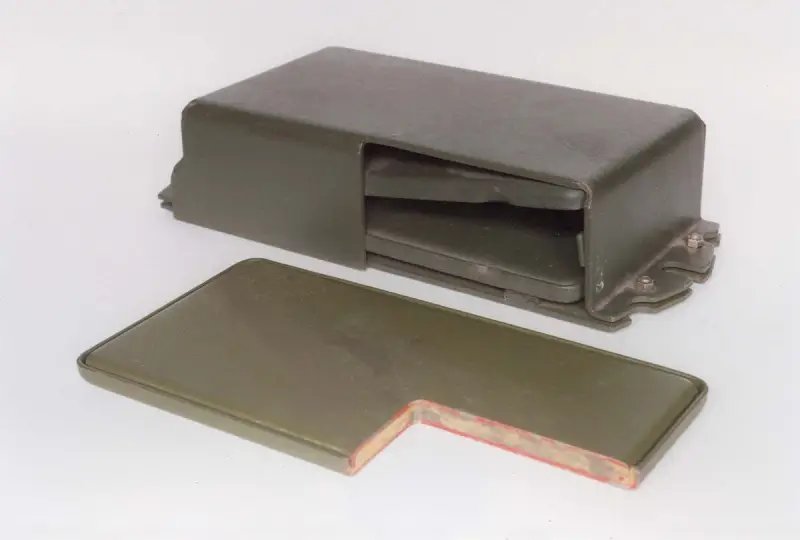
A stamped metal container consisting of a bottom and a box-shaped lid with eyes for mounting on armor. Inside are two flat elements (EDZ) installed at an angle to each other, each of which consists of two steel plates with a layer of explosive located between them, which reacts to the impact of a cumulative jet, but is almost completely inert when hit by bullets and small-caliber projectiles. In general, the entire structure of those very “building blocks”, which has not been a secret for a long time and is described in many publications.
The principle of operation, if you do not go into deep details of the process, is also not complicated. The projectile, hitting the dynamic protection unit, detonates upon impact with its body, after which the elements inside come into play - the cumulative jet, piercing the steel plates, initiates the detonation of the explosives located between them.
As a result of the explosion, the energy of which itself has a negative effect on a body so weak to external influences, the plates begin to move, crossing the jet at high speed and tearing it apart, which leads to a significant decrease in armor penetration. With the correct installation of the blocks, according to open calculations of the Steel Research Institute and practical application experience, it can reach 400–450 millimeters against monoblock anti-tank grenades and guided missiles.

Diagram of the dynamic protection unit "Contact"
But with cumulative shells for cannon artillery – this primarily concerns tank guns – the situation is changing dramatically, as Soviet testers noticed more than forty years ago. If the detonation of a grenade or rocket on armor equipped with “Contact” left behind small dents in depth, then in the case of shelling with the above ammunition we were talking about deep cavities in the armor and even through holes.
What could be the problem? After all, according to the mechanism of action, tank cumulative shells are not much different from rockets or grenades - they penetrate armor in the same way due to the cumulative jet. But the casket simply opened.
The fact is that the cover of the “Contact” block, in addition to protecting the internal elements from external influences, at the same time serves as a cocking screen, causing the detonation of the projectile at a short distance from the thrown steel plates with explosives. Essentially, this ensures that the plates can move during an explosion and protect them from damage by the head of an attacking anti-tank weapon.
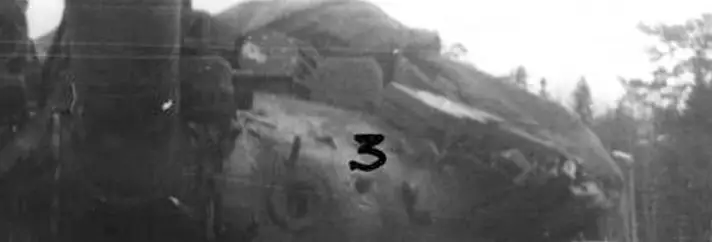
A through hole in the T-62 turret after being hit by a 125BK3M 14-mm cumulative projectile. Dynamic protection didn't help.
And this works great when the attack ammunition is low-velocity grenades and rockets. However, cumulative shells for tank guns have a high mass and initial flight speed, which reaches up to 900 meters per second for domestic “cumulative” shells for 125 mm tank guns. In addition, they have a very thick-walled body to withstand high pressure when fired.
The combination of these three factors leads to a logical result: the steel cover of the “Contact” unit, the thickness of which is literally three millimeters, is simply broken through by the head of the projectile, and the penetration of the cumulative jet occurs after the fact into the damaged explosive elements of dynamic protection. As a result, the protective capacity of the block can be reduced by more than half and amount to 175–270 millimeters - as evidenced by publicly available calculations of the Steel Research Institute and test results.
Of course, this is not dangerous for tanks well protected by passive armor, since the armor penetration of tank cumulative shells of most calibers is generally limited to 500–600 millimeters, and its “residues” after overcoming dynamic protection are not dangerous for combined armor packages. But if we are talking about old combat vehicles with solid steel armor and weakened projections (sides, rear), then the unpleasant nuance of the “Contact” can threaten with serious consequences - it can penetrate quite easily.
Influence of the edge effect
Another important factor that interferes with the effective operation of the Kontakt dynamic protection is the so-called edge effect, which manifests itself in the strong dependence of the anti-cumulative resistance of the unit on the location of the anti-tank weapon. It was described in detail with his colleagues back in the 80s by the Soviet scientist D. A. Rototaev - the man thanks to whom “reactive armor” generally appeared on domestic tanks.
In order to understand the essence of this phenomenon, it is necessary first of all to note that dynamic protection works most fully only if a projectile hits at a slight angle to the cover of its block - in other words, at an angle. That is why, for example, on the frontal parts of tank turrets “Contact” is installed in a “wedge” or “herringbone” pattern, while on the front of the hull it repeats the structural angles of inclination of the armor parts, and on the sides it works within the heading maneuvering angles.
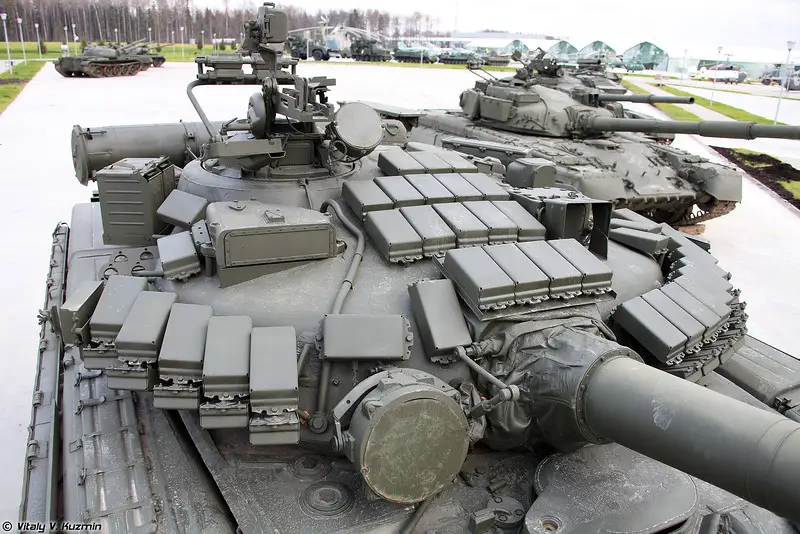
However, as we know, inside the Contact block, dynamic protection elements (throwable plates with explosives) are installed almost in a v-shape. Based on this, when a projectile hits one or another part, they are involved in different ways.
So, if a cumulative warhead hits (at an angle of 60 degrees or more from the vertical) into the zone marked in the figure below with a red star, only one upper explosive element of dynamic protection comes into contact with the cumulative jet, while the lower one is actually inactive. If we talk about getting into the zone marked with a blue star, then only a limited area of the thrown plates and their fragments will interact with the jet.

How the residual penetration (the ability to further penetrate the armor) of a cumulative projectile changes after overcoming the dynamic protection block is indicated by the results of research by Rototaev and his colleagues, presented in the article “The influence of the edge effect on the dynamic protection of a tank”, where it was used as an attacking weapon 93 mm anti-tank grenade warhead at a 60 degree angle.
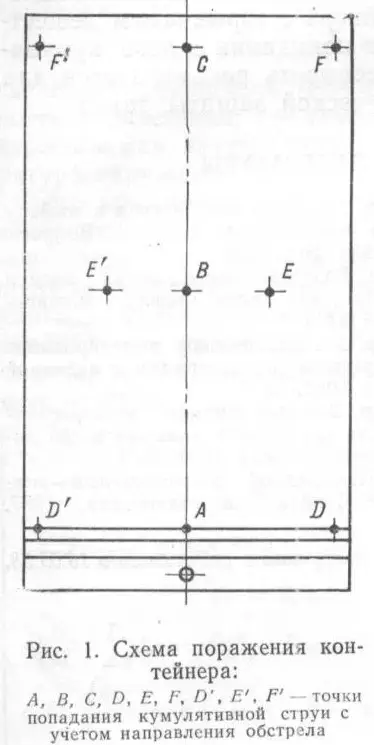
Dynamic protection container (top view) and firing points
Tests showed that after detonating grenades at points E, the residual penetration was 86 millimeters, while in the center (point B) it was only 37 mm. Closer to the edge at points D it is already 292 millimeters, at point A it is 241 mm. At points F, where only one DZ element works - 376 mm, at point C - 274 mm. The difference, as can be observed, in some places is almost tenfold compared to the central part. Which can lead to penetration of even combined armor if the cumulative warhead comes across as very powerful.
Of course, the probability of a grenade or rocket hitting the edges of a block is far from one hundred percent - even at close range it is practically impossible to do this intentionally. Moreover, with the correct installation of blocks (one after another), the explosive elements one way or another cover the weakened zones, but cases when a tank was penetrated by a rocket or grenade, which in principle should not have done this due to the presence of dynamic protection, are not so rare.
You need to know about this and not rely on the treasured “bricks” as a panacea for all threats on the battlefield - for the enemy the edge effect means nothing, since he will not be able to hit it like that on purpose, but for the attacked it is important - luck can sometimes turn away.
Conclusions
As a conclusion, it is worth noting that “Contact” is a really old complex and, due to its design, has many shortcomings. Moreover, the edge effect and low resistance to tank cumulative shells are only a small part of them, so the same “Kontakt-5” or “Relikt” look like perfection of design thought against its background.
Nevertheless, dry figures say that equipping tanks with combined armor with this “reactive armor” generally increases their resistance to cumulative weapons up to two times, and even the old T-55 and T-62 – up to four times. So it is not surprising that they are not going to retire the “Contact” and have been fighting with it on board for many years in various military conflicts.
Yes, it’s not ideal, it doesn’t hold sub-caliber shells and is vulnerable to tandem “cumulative” rounds, but you can’t do without it – a kind of “minimum entry threshold” for armored vehicles on the battlefield.
Information sources:
A. I. Anisko, S. V. Bodrov et al. “The influence of the edge effect on the dynamic protection of a tank.”
V. A. Grigoryan, E. G. Yudin and others. “Protection of tanks.”
A. V. Babkin, V. A. Veldanov and others. “Weapons and ammunition.”
A. A. Tarasenko, V. V. Chobitok “Dynamic protection. The Israeli shield was forged in... the USSR?
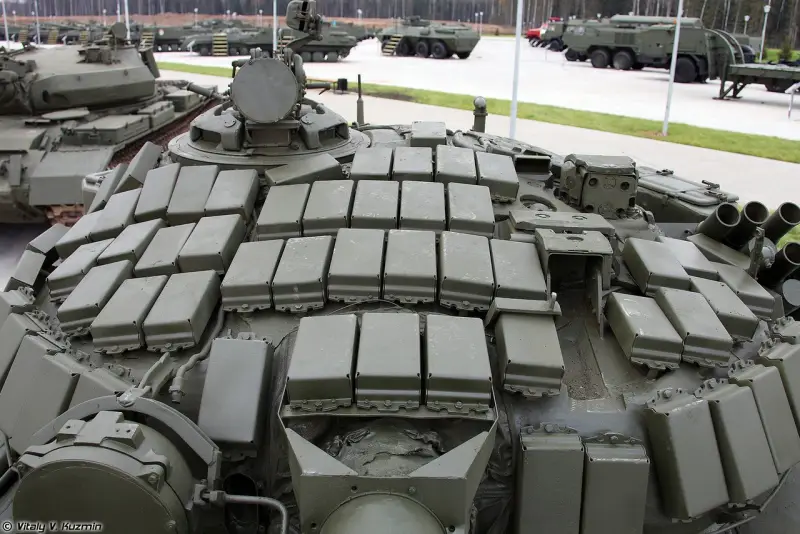
Information